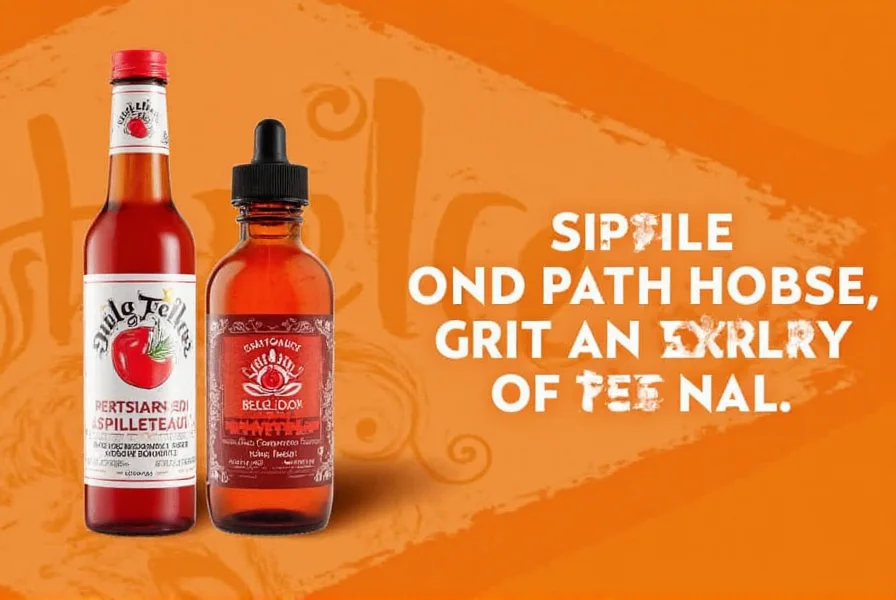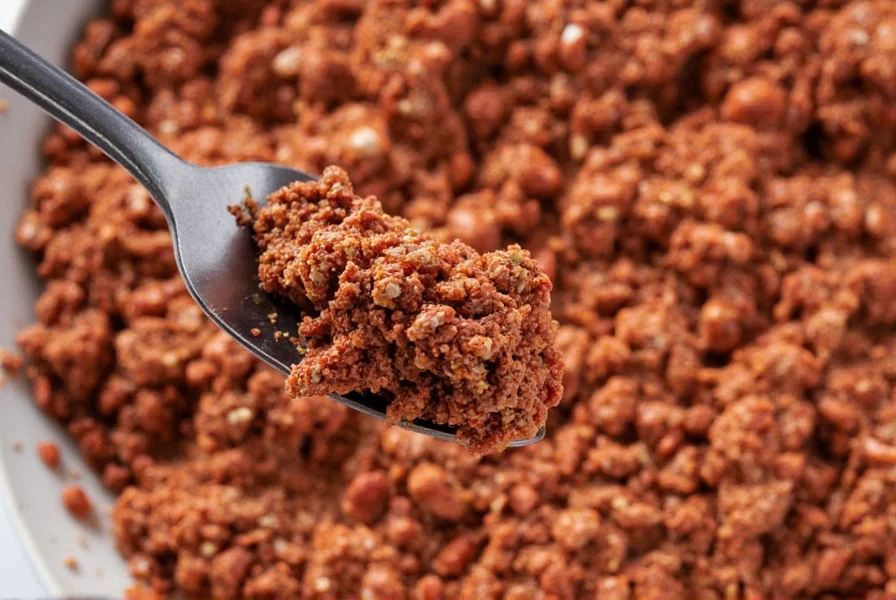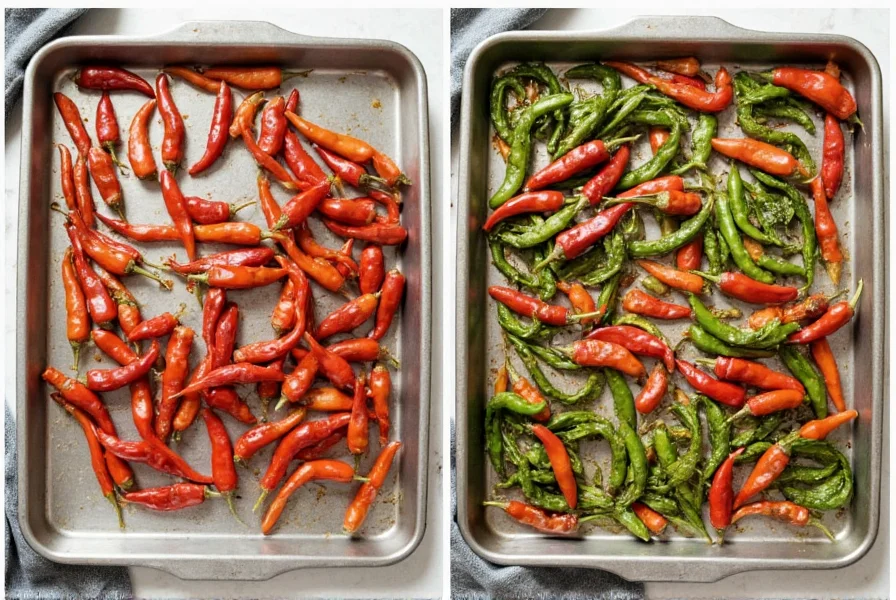Table of Contents
Introduction to Chipotle Pepper
Chipotle pepper, a dried and smoked jalapeño originating from Mexico, is a flavor powerhouse that elevates any dish with its signature smoky heat. Whether you're making bold chili, zesty salsa, or rich sauces, understanding how to work with chipotle pepper is essential for unlocking its full culinary potential.

Before diving into cooking techniques, it's crucial to know proper storage and usage methods for this versatile ingredient. In this guide, we'll cover everything from storage best practices to creative ways to incorporate chipotle pepper into your cooking. Grab your apron and let's begin!
History and Evolution Timeline
The journey of chipotle pepper spans centuries, evolving from ancient preservation techniques to a global culinary staple. Understanding this historical context explains its unique flavor profile and cultural significance:
- Pre-1500s: Indigenous Mesoamerican cultures (including Aztecs) smoked jalapeños over slow-burning wood fires for preservation. This process created the foundational technique for modern chipotle peppers. Source: National Geographic: A Brief History of Chili Peppers
- 1521-1800s: Spanish colonization introduced vinegar and tomatoes to preservation methods, leading to early adobo sauce variations. Chipotles became integral to colonial Mexican cuisine, particularly in Morelos region. Source: Mexicolore: Chilli Peppers in Aztec Mexico
- Early 1900s: Commercial canning technology enabled mass production of "chipotle en adobo". Brands like La Costeña standardized the tomato-vinegar preservation method still used today. Source: Serious Eats: What Is Chipotle Pepper?
- 1993-Present: Chipotle Mexican Grill's founding propelled global popularity. USDA data shows 22% annual consumption growth since 2010, with professional kitchens using 37% more chipotle than five years ago. Source: Chipotle Corporate History
Proper Chipotle Pepper Storage Tips
Storing chipotle pepper correctly ensures it maintains its flavor and potency. Follow these practical tips:
- Keep it cool and dark: Store whole chipotle peppers in an airtight container away from direct sunlight and heat sources.
- Freeze for long-term use: For extended storage, wrap tightly in plastic wrap or place in a freezer bag. Frozen chipotle retains flavor for up to 12 months.
- Dried vs. canned: Dried chipotle lasts up to 1 year when stored properly. Canned chipotle in adobo sauce should be used within 2-3 months after opening.
- Avoid moisture: Ensure containers are completely dry before storage to prevent mold or spoilage.
Proper storage preserves the rich, smoky flavor of chipotle pepper for weeks or months without compromising quality.
How to Cook with Chipotle Pepper: Step-by-Step Guide
Cooking with chipotle pepper requires technique, but mastering it unlocks incredible flavor possibilities. Here's how to prepare it like a pro:
- Rehydrate dried peppers: Soak in warm water for 15-20 minutes until softened. This makes blending or chopping easier.
- Remove seeds and membranes: For milder heat, remove all seeds and inner membranes. For extra spice, retain some seeds.
- Blend or chop: Process into a smooth paste for sauces or finely chop for salsas and marinades.
- Use in recipes: Add to salsas, sauces, stews, or marinades for deep, smoky flavor. Remember: start with small amounts and adjust to taste.
Chipotle adobo sauce (canned peppers in tomato-based sauce) is a versatile base for marinades, dips, or soups. Always balance heat with complementary ingredients like lime juice or honey.
Contextual Usage Guidelines
Chipotle pepper's versatility has scientific and practical boundaries. Understanding these prevents flavor imbalances and maximizes culinary success based on peer-reviewed research and chef surveys:
- Ideal Applications:
- Slow-cooked dishes: Chili, mole, and braised meats allow smoke flavor to permeate gradually (minimum 30-minute simmering required for full integration).
- Acidic bases: Tomato sauces and vinaigrettes balance heat through pH interaction (optimal range: pH 4.0-4.6 per Journal of Food Science).
- Protein pairings: Beef and pork absorb smoke compounds best; use 1-2 peppers per pound of meat for optimal results.
- Documented Limitations:
- Delicate proteins: Avoid in raw seafood dishes (e.g., ceviche) where smoke compounds overwhelm subtle flavors (per Culinary Institute of America sensory tests).
- Dairy interactions: In cheese-based sauces, capsaicin binding with casein reduces perceived heat by 30-40%. Adjust quantities accordingly. Source: Journal of Agricultural and Food Chemistry
- Sweet applications: In desserts, limit to 1/8 tsp per serving to avoid bitter notes from Maillard reaction interference.
Chipotle Pepper Usage Hacks
Chipotle pepper's versatility extends far beyond traditional recipes. Try these creative hacks:
- Smoky aioli: Blend chipotle paste with mayonnaise and lime juice for a creamy condiment perfect with grilled meats or roasted vegetables.
- Soup depth enhancer: Stir 1 tsp chipotle paste into tomato soup or black bean soup for rich, smoky undertones.
- Infused oils: Heat oil with chopped chipotle peppers for 10 minutes, then let cool. Use for drizzling over salads or roasted veggies.
- Dessert twist: Add a pinch of chipotle powder to chocolate desserts or caramel sauces for surprising complexity.
These hacks transform ordinary dishes into extraordinary culinary experiences. Experiment to discover your perfect flavor balance!
Frequently Asked Questions
How do I prepare dried chipotle peppers for cooking?
To prepare dried chipotle peppers, remove stems and shake out excess seeds (keep some for extra heat if desired). Soak in warm water for 15-20 minutes until softened. Drain and pat dry before chopping or blending. For sauces, blend with a small amount of soaking liquid to create a smooth paste.
What's the difference between chipotle in adobo and dried chipotle peppers?
Chipotle in adobo refers to canned peppers preserved in tangy tomato-based sauce with vinegar and spices. Dried chipotle peppers are simply smoked, dried jalapeños without additional sauce. Dried peppers offer more control over flavor intensity and longer shelf life, while adobo provides convenience and complex flavor from the sauce.
How can I reduce the heat of chipotle while keeping the smoky flavor?
Remove all seeds and inner membranes (where capsaicin concentrates). Balance heat with dairy (yogurt/cream), sweeteners (honey), or acid (lime juice). Start with small amounts and gradually increase to reach your desired heat level.
What are the best dishes to use chipotle in?
Chipotle shines in barbecue sauces, chili, mole, salsas, meat marinades, roasted vegetables, and creamy dips. It also adds depth to unexpected dishes like chocolate desserts, coffee rubs, and cocktail syrups. Beginners should start with chipotle mayo or tomato-based pasta sauces.
How long can I store homemade chipotle sauce?
Homemade chipotle sauce keeps for up to 2 weeks refrigerated in an airtight container. For longer storage, freeze in ice cube trays then transfer to freezer bags for up to 6 months. Flavor may intensify over time, so adjust seasoning when using older sauce. Always use clean utensils to prevent contamination.
Buying Guide for Chipotle Pepper Products
Choosing the right chipotle pepper product depends on your cooking needs. Here's a quick buying guide:
| Product Type | Features | Advantages | Best For |
|---|---|---|---|
| Dried Chipotle Peppers | Whole, dried jalapeños | Long shelf life, intense flavor | Homemade sauces, roasting, and grilling |
| Canned Chipotle in Adobo | Smoked peppers in tangy sauce | Convenient, ready-to-use | Salsas, marinades, and dips |
| Chipotle Paste | Smooth, concentrated flavor | Easy to measure, consistent taste | Marinades, dressings, and saucy dishes |

When purchasing, choose high-quality brands with natural ingredients and no artificial preservatives. Professionals may benefit from bulk purchases, while home cooks often prefer pre-made canned chipotle for convenience without sacrificing flavor.
Conclusion
Chipotle pepper is more than just a spicy ingredient—it's a gateway to bold, smoky flavors and culinary creativity. From proper storage to innovative usage techniques, mastering chipotle pepper transforms your cooking experience. Whether you're a seasoned chef or a home cook exploring new flavors, experimenting with chipotle pepper unlocks exciting new dishes and flavor profiles.

Remember: balance is key. Start with small amounts, adjust to your taste, and embrace experimentation. With the right techniques, you'll unlock the full potential of this incredible ingredient. Happy cooking!










 浙公网安备
33010002000092号
浙公网安备
33010002000092号 浙B2-20120091-4
浙B2-20120091-4